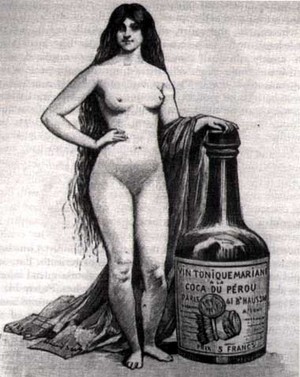Cocaine was not always the white devil that it is known to be today. The drug derived from the leaves of the coca plant was used in a number of commercial products during the 19th and even 20th centuries. Some of them make more sense than others, but no matter how you look at it, cocaine was viewed as a lucrative substance that could help sell a commodity.
Perhaps the most notoriously well-known product known to contain cocaine was none other than the Coca-Cola soft drink. Although the now giant company is a little shy to speak about its history of association with the psychoactive substance, the Coca-Cola Company used cocaine in its drink from its invention in 1886 up until 1903. Even after that time, the company still touted the supposed medicinal benefits of the popular carbonated beverage.
In terms of medicinal products, cocaine was used in several pain-relieving medications. One product was cocaine drops used to help soothe the pain associated with toothaches. Cocaine is an effective local anesthetic, but its potential to be habit-forming caused most drug companies after the FDA was formed to remove the ingredient from their products’ ingredient lists. With the toothache drops, users could look forward to a dulling of the pain as well as a general lift in mood and mild euphoria which was undoubtedly due to the cocaine. Certain brands of cough drops also contained cocaine. One particular brand of lozenges from Belgium claimed that the drops were “indispensable for singers, teachers, and orators” ( http://wings.buffalo.edu/aru/preprohibition.htm)
Another use of cocaine in commerce was in wine. In the late 19th century there was quite a competitive market for wine containing cocaine, which was used both medicinally and (go figure) recreationally. One brand of coca wine, Vin Mariani, touted its seal of approval from pope Leo XIII and was enjoyed even by Queen Victoria of Great Britain. Jules Verne is said to have written his work “Round the World in 80 Days” while under the influence of Vin Mariani’s coca wine. Auguste Bartholdi, the architect of the Statue of Liberty remarked that if he had discovered Vin Mariana twenty years earlier, he would have designed the Statue several hundred meters taller.
Alas, these products were all doomed to an eventual demise at the hands of United States legislation. After rigorous new pure food and drug laws put into effect by a recently formed FDA in the United States, Congress finally passed the Harrison Act in 1914. This Act prohibited the sale of cocaine or opiates in over-the-counter medications and allowed the sale of the drugs only via a prescription. Although in the long run, it is certainly a good thing that cocaine left the ingredient list of many commercial products, the drug has nonetheless left a very interesting imprint on consumer culture. And even to this day, its name remains enshrined in the popular soft drink Coca-Cola. This Superbowl was brought to you by…COKE.
